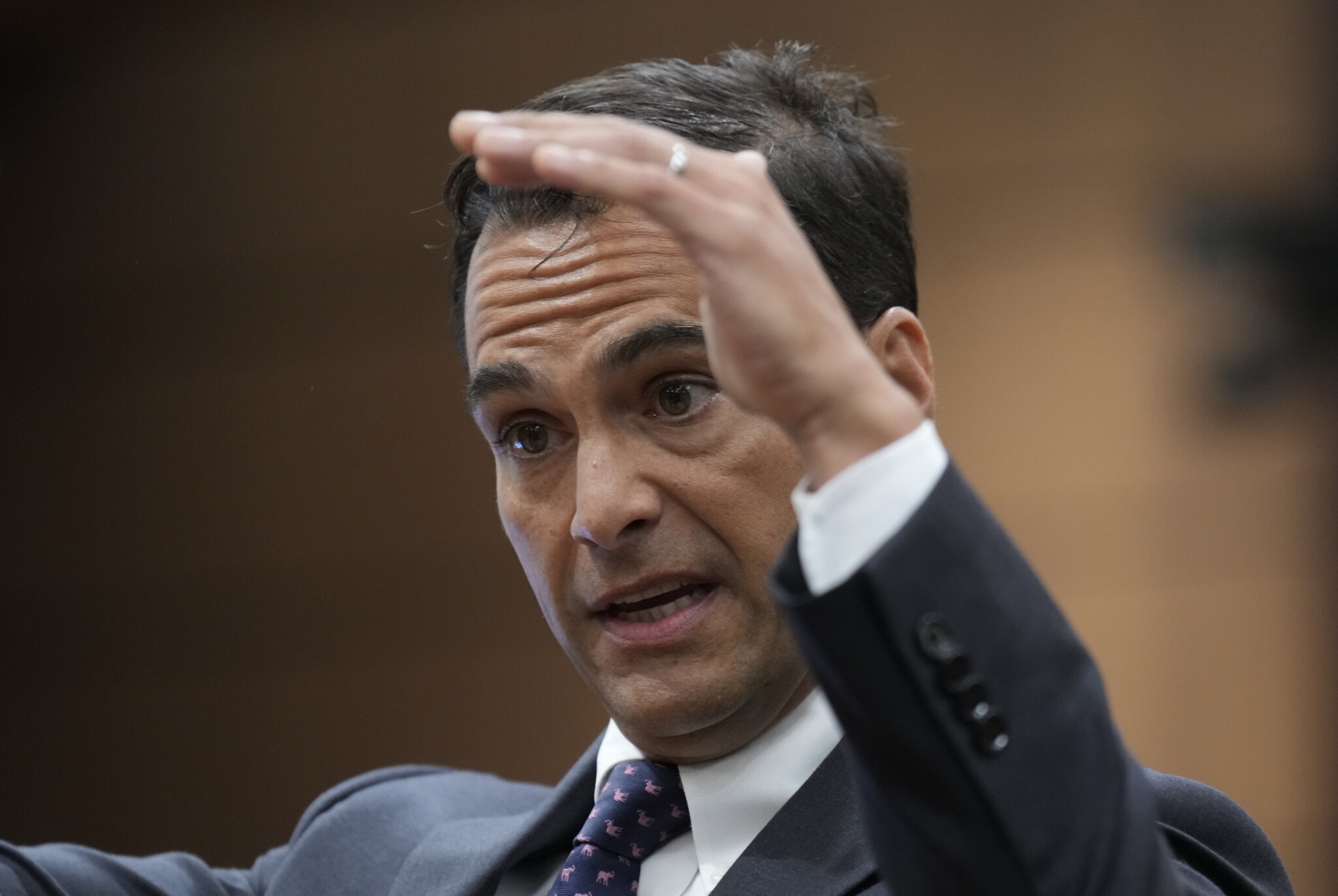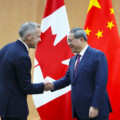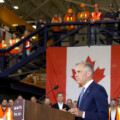The Parliamentary Budget Officer (PBO) released a bleak report Thursday projecting sluggish real GDP growth for Canada for the rest of this decade and annual interest payments to the debt jumping to $82.4 billion. Throughout the remainder of the 2020s, the PBO’s “Economic and Fiscal Outlook – September 2025” predicts real GDP growth to remain below 2 percent, all while interest payments on the debt are to take up a greater proportion of overall federal expenses.
“The PBO report predicts fairly anaemic GDP growth, to be frank, over the next five years or so,” University of Toronto economist Joseph Steinberg told The Hub in an interview. “And a big part of that is…obviously the lower projected population growth as a result of the downturn in immigration. A big part of it, [too], according to the [PBO report, is] trade tensions, tariff uncertainty, and tariffs themselves.”
For 2026, the PBO dropped the projected real GDP growth from 1.5 percent (predicted in the spring) to 1.3 percent. In the next four years (2027-30), it predicts GDP growth to remain under a healthy 2 percent growth: 1.8, 1.8, 1.7, and 1.7. Meanwhile, the PBO sees the U.S. real GDP continuing to outperform Canada, which would continue the gap in economic growth between the two countries. The U.S. real GDP growth is predicted to be 1.7 percent in 2025. The report predicts U.S. GDP will consistently outperform Canada for the rest of the decade.
Interest payments on ballooning debt set to be bigger share of federal expenses
Adding to the seriousness of the PBO’s report is the growing “public debt charges” or annual interest payments made by Ottawa to service the federal debt, which is projected to grow to $1.66 trillion by 2030-31. The interest payments on the federal debt for 2025-26 are predicted to be $55.3 billion, and projected to jump to $82.4 billion by 2030-31. The PBO’s projections show the interest payments rising from 9.7 percent of the total amount spent on government expenses to 12.5 percent by the 2030-31 fiscal year.
“The current path we’re on in terms of federal debt as a share of the economy is unsustainable,” Interim PBO head Jason Jacques told Liberal MP Vince Gasparro, who suggested Canada was on a good fiscal path during a Government Operations and Estimate committee meeting.
Steinberg views the predicted larger deficits and growing debt as causing issues for increased interest rates on the national debt. However, he noted Canada’s debt-to-GDP ratio (currently at 41.7 percent) is in much better shape than the U.S. and much of Europe, despite the latest report projecting it to now increase over the next five years to 43.7 percent by the end of the decade.
[We’re] still going to get hit by this global increase in sovereign debt rates. But when we’re talking [potentially] $80, $90, $100 billion deficits [in Canada], that’s going to start putting some upward pressure on the extent to which investors are willing to take up Canadian sovereign debt specifically, Steinberg said. “And that’s going to drive up…some additional upward pressure on Canadian interest rates, on Canadian bonds relative to other countries.”
Steinberg is convinced that if Canada doesn’t right the ship economically, the country will face intensified brain drain of high earners leaving for America due to the widening gap in better compensation offered south of the border. Top Canadian talent is also lured away from Canada because of the more competitive tax rates.
Echoing Steinberg’s assessment, a Globe and Mail report this week showed tech startups founded in Canada dropping by half in recent years, due in part to uncompetitive tax rates. Meanwhile, the Fraser Institute released a study detailing the disproportionately high tax burden on top high-earning families in Canada, which spurs high-skilled Canadian professionals to emigrate to greener pastures.
“Canada needs to figure out a way to make investments pay off, and a big part of that is to lower taxes on corporate income…[And] we need to do a much better job of incentivizing our companies and multinational companies to generate new intangible capital here, and keep it here,” Steinberg suggested as the main ways Canada can rebound economically.
The U.S.-Canada wealth gap is widening
The PBO report also predicts U.S. productivity will continue to outperform that of Canada.
“The story for the Canadian economy for the last couple of decades is that up until 2015, the real GDP per capita of Canada and the United States tracked very closely. There was a divergence [in 2015], and real GDP growth per capita in Canada has been essentially zero since then, whereas it has remained pretty robust in the U.S.,” Steinberg explained. “So this gap between output per capita in the U.S. and output per capita in Canada has just been…steadily widening over the last decade, and what this report suggests is that widening is going to not only continue, but get worse.”
Other economists believe the PBO report may paint too rosy a picture of Canada’s short-term economic future.
“The economic growth forecast may be a tad optimistic given the current turmoil in international trade,” Lakehead University professor of economics Livio Di Matteo told The Hub. But he wasn’t fully pessimistic about the report’s findings. “Given the amount of export shifting that is occurring, as well as the assorted projects that may boost domestic production and the retaliation of Canadians who are not spending money in the United States, the economy may indeed meet those growth targets.”
Steinberg believes the fact that Canada is no longer keeping up with the U.S. on a per capita basis runs the risk of us being left in the dust when it comes to attracting top-level talent; exacerbating the country’s stunted growth and potentially making it a more long-term reality.
“The main effect is a decline in living standards, or a decline in the living standards relative to the living standards that we ought to enjoy given the human capital that we have,” Steinberg said. “I think there’s the danger of a vicious cycle in that the more and more productive the U.S. economy gets relative to the Canadian economy, the less and less Canada is going to look like a good investment, a good opportunity for new investments to be made.”









